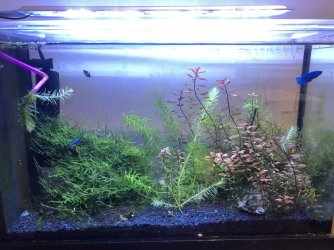Hi there, turns out I have staghorn algae, and I originally thought that I was putting my arm into the tank so much my hairs were falling off and sticking to the moss, but it turns out it's just a type of algae, which relieves me greatly. How should I get rid of it? I read that you can spot-treat it with seachem excel, which is CO2 in a bottle, but does anybody know a method in which I don't have to use that?
Thanks
Thanks


